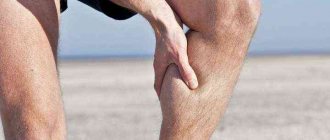Cerebral palsy is a chronic congenital neurological disease characterized by damage to the central nervous system. Occurs when one or more areas of the brain are damaged. Depending on the volume of brain damage, the severity of cerebral palsy is determined. When the child is ill, various motor abnormalities are observed. In the most severe forms of the disease, muscle structures are involved. In addition to partial loss of motor activity, the disease can reveal pathology of the visual and auditory apparatus, as well as impaired speech activity.
Cerebral palsy is often accompanied by epileptic seizures and dementia. The disease is chronic and cannot be fully recovered. But with control, treatment, and most importantly with long and proper rehabilitation, the symptoms and course of the disease are much easier to bear. Currently, during the rehabilitation of such patients, a verticalizer for children with cerebral palsy is widely used. It is convenient because the child can stand independently and contributes to the child’s social adaptation.
Treatment of this disease will be primarily aimed at the rehabilitation of the patient’s motor functions, correction of the speech apparatus and restoration of the psycho-emotional state. Motor functions are restored by changing and strengthening certain postures. In addition to concomitant disorders, it is also necessary to focus on treating the immediate cause of the disease. To do this, a thorough diagnosis of the patient is carried out.
If traditional methods of treatment are not effective, then they resort to radical therapy - surgery. Surgical methods affect tendons and muscles. This brings them to a more natural state. If it is possible to correct any disorders affecting the brain, then they resort to neurosurgery. Treatment should be started as early as possible. Since as the child develops, orthopedic changes occur, which will need to be corrected later.
All patients with cerebral palsy require mandatory rehabilitation. It, like treatment, needs to be started as early as possible. Rehabilitation activities include swimming in the pool, a dosed increase in physical activity (only with the permission of a specialist), exercises to develop the functions of the cerebral hemispheres, and the development of fine motor skills. At home, it is imperative to support the work on the child’s rehabilitation. Now there are special installations for giving the patient a fixed vertical position. These installations are called verticalizers. They are very convenient to use; depending on the model, they can change the patient’s position, train the muscular corset and help the patient adapt to the world around him. At the same time, a person gains some freedom of movement and can feed himself using a table.
Mechanism of action and features
The verticalizer refers to devices used by patients with pathologies of the musculoskeletal system caused by cerebral palsy. It allows you to maintain the patient’s previously unstable position in an upright state. Due to regular use of the device, an improvement in the quality of life is observed. This is largely due to the fact that the process of stimulation of muscle fibers occurs, due to which musculoskeletal functions are activated. Important! The main task of the device is to activate supporting loads in the foot area.
Regular use of the verticalizer in patients prevents muscle atrophy and early thinning of bone elements. Rehabilitators, together with parents, achieve positive dynamics of the disease, due to the ability to independently lift or sit down, as well as grab a spoon or other manual manipulations that were previously impossible. Patients become more adapted, they can not only care for themselves, but also receive a specialty in the future.
Parents' opinion
From reviews of parents who have already purchased verticalizers for their children.
We purchased a static verticalizer for our child after our doctor recommended it to us. It turned out to be very convenient for both the child and us - it is easy to turn thanks to the wheels, and the materials from which it is made are soft and hypoallergenic. After just a few weeks, we began to notice improvements in the child’s condition and hope that this is not the limit.
Alina and Sergey
On the recommendation of our neurologist, we purchased a dynamic verticalizer for our child diagnosed with cerebral palsy. It was very touching to see how a child who could not walk was suddenly able to move independently.
I think this was a very big breakthrough in treatment – both for us and for the child himself.
Valera
Basic recommendations for selection
Choosing the right verticalizer will help not only achieve the desired result, but also prevent serious consequences associated with inconvenience of use. The selection is carried out by the patient together with a specialist, who identifies the main characteristics of the required device. They are assessed on the severity of the pathological process, the physical parameters of the patient, the required level of fixation, and the load that is subsequently imposed. At the same time, the patient’s condition, which he experiences in a verticalizer with these parameters, is also taken into account, especially if these are children. Not only the level of comfort is assessed, but also other degrees of muscle tension.
What to consider when choosing
First of all, when choosing a device, it is necessary to take into account the general condition of the child and what kind of therapy he needs. However, even in this case, there is often a need to adjust the mechanism to the child, because each patient with cerebral palsy has its own characteristics.
Some companies that sell verticalizers allow you to conduct a kind of testing of the device by taking it to your home for a week or two, after which you can return it.
You can also rent a device before purchasing it to make sure it is what your child needs.
When choosing a verticalizer, it is also important to consider the age of the child who will use it. Manufacturers usually produce such devices in three sizes:
- for children from 3 to 6 years old;
- for children from 5 to 12 years old;
- for children from 12 to 16 years old.
As a rule, there is no need to use such mechanisms until the child is 2 years old.
In addition, you can purchase a verticalizer with a removable or fixed table, folding or capable of transforming into a couch.
You can choose exactly the model that is ideal for both the child and the person who cares for him and will help him use the device.
There is no need to make hasty conclusions regarding whether the device is suitable or not. In most cases, each child with cerebral palsy needs some time to get used to this device.
Article on the topic: What is an abscess - causes and signs, stages, possible complications and methods of treatment
Sometimes it may be necessary to persuade a child to use a verticalizer, especially in the first days of rehabilitation. Only after the child gets used to this device will it be possible to judge how effective the rehabilitation is.
Size selection
The choice of the size of the verticalizer should be given special importance, since the effect of the device largely depends on the selected parameters. It is recommended that all measurements be taken by a specialist or relative under the strict supervision of a doctor. This is due to possible difficulties due to the patient's condition. The following values are taken into account, including the following data:
- height and weight;
- foot length;
- hip width;
- chest volume;
- length of thighs and legs;
- distance from feet to chest.
Measurements are taken in the clothes and shoes that the patient wears in everyday life. A child suffering from this diagnosis and regularly using orthopedic shoes needs to wear them when taking parameters, as they will change the values.
Correct selection of device
Only a specialist doctor can give the correct recommendations on choosing a verticalizer. To do this, the patient must undergo an examination, which will allow the doctor to identify underlying diseases, determine the type of device and level of body fixation, physical capabilities and permissible loads.
If possible, the patient should also participate in the choice of the device, because only he can determine the degree of comfort of the proposed device. However, the main criteria should be the doctor’s recommendations, since the device is intended to correct existing problems, and this may cause additional discomfort.
Rules of application
It is important for the patient’s relatives to receive recommendations from a specialist on the use of a verticalizer for a child. This is largely due to the presence of certain operational difficulties in the early stages.
Before each use of the device, the condition of the locking apparatus and brakes is checked. The verticalizer should be installed on a surface that has a horizontal coating. If the device does not move, the brake setting and the child holder must be checked regularly. It is prohibited to use a verticalizer for children with cerebral palsy if the surface on which it stands is tilted.
The load level is checked by tilting the device; the load increases in proportion to the angle. This explains the gradual change in inclination, since the initial installation at 90 degrees vertical can cause overvoltage. The duration of training should also be increased as treatment progresses. The first experiment should not exceed 2–3 minutes.
Modern verticalizers not only improve health, but also help the child adapt to the environment.
Stander for children with cerebral palsy Kitten 2 INVENTO KT-2
Description
The verticalizer Kitten 2 INVENTO KT-2
is equipped with support from the back or front, helps you play, eat and study while standing. The model for children with cerebral palsy creates an individual approach to the needs of the child. The design of the product helps you take an upright posture with support from the front and back.
Comfortable support creates the positive impact required for child development. Selecting the angle of inclination and adjusting the parameters of the device through the use of pneumatics makes it possible to gradually lift the patient from a lying position to a standing one.
A set of belts and pillows securely secures the child's torso, helping to play and eat. The model is created from components that are harmless to the patient, and the design is handmade.
Possible colors:
Grass Size 1 Sea Size 2
| Latte Size 3 | Red Optional |
Green Grass Blue Sea Optional Optional
Brown Sugar Hot Red Optional Optional
| MED Blue Optional | MED Latte Optional |
Advantages:
- Adjustable table tilt angle;
- The product “grows” with the child;
- A low footrest makes it easier to get up.
- Verticalization with front and rear support.
The ergonomic and adjustable headrest perfectly stabilizes the head.
The folding knee clip makes it easier to place the child in the verticalizer.
Foot adjustment of the device's tilt angle makes it much easier to control the child's position in the device.
Scale indicating the angle of inclination.
Features of breathable upholstery:
- Lightweight and anti-allergic;
- Natural protection against mold;
- Antibacterial characteristics;
- Disinfection;
- Convenient to maintain cleanliness;
- Good adjustment of elasticity and hardness;
- Very reliable;
- Normal recycling;
- Protection from deformation.
The verticalizer is suitable for teenagers and children with diseases:
- Cerebral palsy in children;
- Spina bifida;
- Spinal or brain disorder;
- Disorders of the spine, injuries of the lower extremities, as well as the spinal cord;
- Muscle diseases of various forms;
- Genetic disorders.
The basic package of the verticalizer includes:
frame on wheels with brakes, pneumatic servo drive, footrest, chest and thigh clips, knee stabilizer, chest and thigh pad with safety straps, adjustable headrest for rear verticalization.
Additional equipment (accessories) of the verticalizer for children with cerebral palsy Kitten II Invento:
COMFORT
KTI_403 Table
KTI_401 Manual therapy table
KTI_425 Table with container for toys
KTI_410 Cotton headrest cover
KTI_427 Tango Wheel (1 pc.)
STABILIZATION
KTI_102 Head support belt
KTI_103 Soles with adjustment in three planes
SAFETY
KTI_003 Soft upholstery on the table
Table of sizes of the vertical clutter for children with cerebral palsy Kitten 2:
Abbreviated size table
| Symbol | Unit | Size 1 | Size 2 | |
| A | [cm] | 14-27 | 18-31 | |
| C | [cm] | 34-59 | 40-78 | |
| A1 | [cm] | 14-27 | 18-31 | |
| C1 | [cm] | 50-75 | 65-97 | |
| W | [cm] | 72-106 | 80-135 |
ATTENTION
: The tolerance of the dimensions indicated in the table is +/- 1 cm.
| Symbol | Measurement | Units | Size 1 | Size 2 | ||
| Front | Rear | Front | Rear | |||
| A | Distance between thigh pads | [cm] | 14-27 | 18-31 | ||
| B | Thigh pad depth | [cm] | 15 | 15 | ||
| C | Adjusting the height of the thigh straps | [cm] | 30-59 | 34-59 | 27-78 | 40-78 |
| A1 | Distance between chest straps | [cm] | 14-27 | 18-31 | ||
| B1 | Depth of chest straps | [cm] | 15 | 15 | ||
| C1 | Adjusting the height of the chest straps | [cm] | 46-75 | 50-75 | 50-97 | 65-97 |
| D | Headrest height | [cm] | 72-106 | – | 80-135 | – |
| G | Distance between knee pads | [cm] | 14-23 | 14-23 | 14-23 | 14-23 |
| H | Height of knee pads | [cm] | 15-31 | 15-54 | 15-54 | 15-54 |
| Verticalizer tilt angle | [°] | 0-90 | 0-90 | |||
| Max. user weight | [kg] | 25 | 45 | |||
| approximate patient height* | [cm] | 70-90 | 80-120 | |||
*Height measurements should not be used as a basis for equipment sizing.
Dimensions and weight of the device
| Measurement | Unit | Size 1 | Size 2 |
| Width | [cm] | 60 | 60 |
| Length | [cm] | 81 | 81 |
| Height | [cm] | 85 | 90 |
| Weight | [kg] | 21 | 21 |
ATTENTION
: The tolerance of the dimensions indicated in the table is +/- 1 cm.
Kinds
Currently, the choice of device is made between six existing varieties, depending on the mechanism of their action and the achievement of effect, and selection is carried out. Among them can be used:
Hyaluronic acid in the joint
- front installations. The mechanism of action of the installation is to develop a load on the abdominal area in a vertical position;
- rear installations. The device is designed taking into account that there is a downside. Its action is based on the development of counteraction when the load is placed on the support. This type is used in cases where serious problems arise with the musculoskeletal system and the inability of children to hold their heads independently;
- multi-level installations. Its structure is based on the possibility of changing position. The advantage is related to the choice of sitting, lying or upright positions;
- static installations. With their help, the patient can move independently;
- active installations. The purchase of this device will help the patient to train various muscle groups independently, even with severe impairments. Thus, you can achieve training of the leg muscles with the help of physical activity in the upper limbs;
- mobile installations. Their use includes several functions. The patient can not only exercise, but also move in space due to the large rear wheels.
What is a verticalizer and why is it needed?
A verticalizer is a device that is designed to help the patient’s body take an upright position. This mechanism is indispensable when a disabled child with cerebral palsy, due to the characteristics of his development, spends a lot of time in a lying or sitting position and runs the risk of kidney or pulmonary failure, osteoporosis and bedsores.
For different conditions of a patient with cerebral palsy, different verticalizers are used. Some of them are completely independent devices, and some are part of another mechanism. They also differ in size and the way they secure the patient.
Flaws
Despite the clear advantage of using this device for people suffering from cerebral palsy, there are also disadvantages that are caused by various factors.
Attention! The primary one is the relatively high cost of the verticalizer.
In the absence of additional financial assistance to the patient, as well as restrictions on the rehabilitation program, independent purchase of the device is difficult. This is due to the relatively high cost of the equipment, as well as the need for replacement depending on age or the required load.
Verticalizer at home
Despite all the positive aspects of rehabilitation equipment, not everyone can purchase it for their child. And all this is due to the fairly high cost of such an installation. But don’t be upset, the verticalizer can be made with your own hands. This installation is done quite simply. But in any case, before doing it, you should definitely consult a doctor.
The most affordable option would be a wooden structure (the base could be plywood). But if you have the skills to work with iron and a welding device, then the structure can be metal.
In order to make such equipment with your own hands, you need to start with a drawing; it is best to involve a person with experience or certain knowledge in this field. Then the drawing must be agreed upon with the attending physician to clarify the characteristics and parameters. It is also worth turning to the literature and reviews to see and compare different device models and settle on a more suitable model. If any mechanism is used in the manufacture of the verticalizer, then consultation and assistance from an electrician (auto electrician) is also needed. The turning of parts according to the drawing and the assembly of parts is carried out either with one’s own strength and skills, or by a carpenter. You can contact furniture assemblers. In any case, this option will be cheaper than the factory one. The final stage will be soft upholstery of the equipment to prevent injuries. A do-it-yourself verticalizer will ideally fit the parameters of a small patient, so all the details will be calculated individually.
Functional electrical stimulation (FES) in ErigoPro
Functional electrical stimulation in ErigoPro is effective in increasing blood flow in the patient's lower extremities. FES helps maintain systolic blood volume and blood pressure. Thus, the indicators of orthostatic tolerance increase in the stages of early verticalization.
Functional electrical stimulation is fully synchronized with cyclic motor therapy of the lower extremities. ErigoPro allows you to use up to 8 FES channels. All settings and monitoring of the therapy process are performed by the therapist in real time using the user-friendly Erigo interface on a computer touch screen.
Increased safety: better clinical results
Erigo is a comprehensive method of early mobilization.
|
Reducing patient care costs
Read the full Zivi study (2018) in English. language |
Excellence in Research with Erigo
Erigo is the most researched robotic riser table on the market
Best user experience with Erigo
| Expert opinion: The use of assistive robotic devices increases the efficiency of the therapist. Loric Berney, Head of Rehabilitation Department, CHUV Clinic, Switzerland | Patient's opinion: It's great that my rehabilitation began at a very early stage! Timothee Rajaonarivo, patient at the CHUV clinic, Switzerland |
Why do disabled people need a verticalizer?
A verticalizer (its other name is a stander) is necessary for many disabled people, including for psychological reasons. After all, the constrained state and inability of such citizens to take part in any life processes is very depressing. At the same time, he may find himself in a depressed state and lose interest in existence. The presence of a verticalizer allows people with disabilities to lead a completely different lifestyle.
Doctors recommend purchasing a stander mainly for medical reasons, since in people who are constantly in a sitting or lying position, some processes slow down. This can lead to unpleasant consequences, for example, kidney failure, pulmonary failure, osteoporosis or low blood pressure. In addition, in such patients, blood circulation slows down and bedsores occur.
Keeping a disabled person in an upright position will help improve the functioning of the body and avoid adverse consequences.
Stender is often prescribed to patients for rehabilitation during the treatment of certain pathologies that cause the inability to walk, or after surgery.
A verticalizer is usually necessary for patients with the following diseases:
- cerebral palsy;
- dysfunction of the spinal cord;
- spinal injuries;
- muscle dystrophy;
- multiple sclerosis;
- stroke.
The stand is designed to train balance and gain self-service skills.
Benefits of early rehabilitation with Erigo
|
Varieties
A stander is a device with special belts that secures a disabled person. They support the body in such a way that the lower limbs are not loaded at all. The design of the verticalizer has clamps for the torso, feet, knees and pelvis.
Currently, standers are made of metal, wood or polymer
There are several varieties:
Electric wheelchair for disabled people
- Dynamic. This verticalizer is produced for adults. It allows a person to move independently. A dynamic stander has large wheels, which a person operates with the force of his hands.
- Static. It includes small wheels that help you move around the room. In this case, the disabled person does not require outside assistance.
- Front. Such a device can be purchased not only by adults, but also by children. The front verticalizer involves relying on the abdominal area. However, only those people who can hold their head up on their own can use it.
- Rear. The device is designed to rest on your back. Such standers are needed by people who are unable to hold their head up on their own. They are usually prescribed to patients who cannot move.
- Stroller with verticalizer. They are produced not only with mechanical, but also with electric drive. The convenient design of this stand allows you to easily move a disabled person from a sitting to a standing position. This action makes the life of a sick person much easier.
- Multi-level. This device allows a disabled person to change his position. The patient can stand, sit and even lie down. Another function of this verticalizer is fixation in a semi-standing position.
There is another type of stander - active. This is a so-called simulator with which you can train muscles.
MODEL OVERVIEW
The telescopic lift-gait trainer TRAM (the name is an abbreviation of the words “transfer” and “mobility”) is a multifunctional device for passive (with the help of an accompanying person) and active (independent) movement of the patient in space.
Combines the functions of a lift and a walking trainer. Excellent for almost all types of movement disorders, including those due to other diseases. It is especially relevant in early rehabilitation in therapeutic departments, for example, after a heart attack, stroke, consequences of injuries and orthopedic surgeries, consequences of TBI and spinal cord injuries, recovery after major operations, including cancer patients.
Comparison of ErigoPro and ErigoBasic complexes
| ErigoPro | ErigoBasic | ||
| Advanced therapy | Progressive vertical alignment 90 degrees | • | • |
| Cyclic movement therapy of the lower extremities | • | • | |
| Support load on lower limbs | • | • | |
| Functional electrical stimulation (FES) | • | — | |
| Hip extension function | • | — | |
| Selection of different motor patterns | • | — | |
| Safety and comfort | Height adjustment/safety straps | • | • |
| Head lift function | • | — | |
| Half armrests / headrests | • | optional | |
| Ergonomics | Full therapy control using an intuitive user interface | • | • |
| Intelligent leg load indicator | • | optional | |










